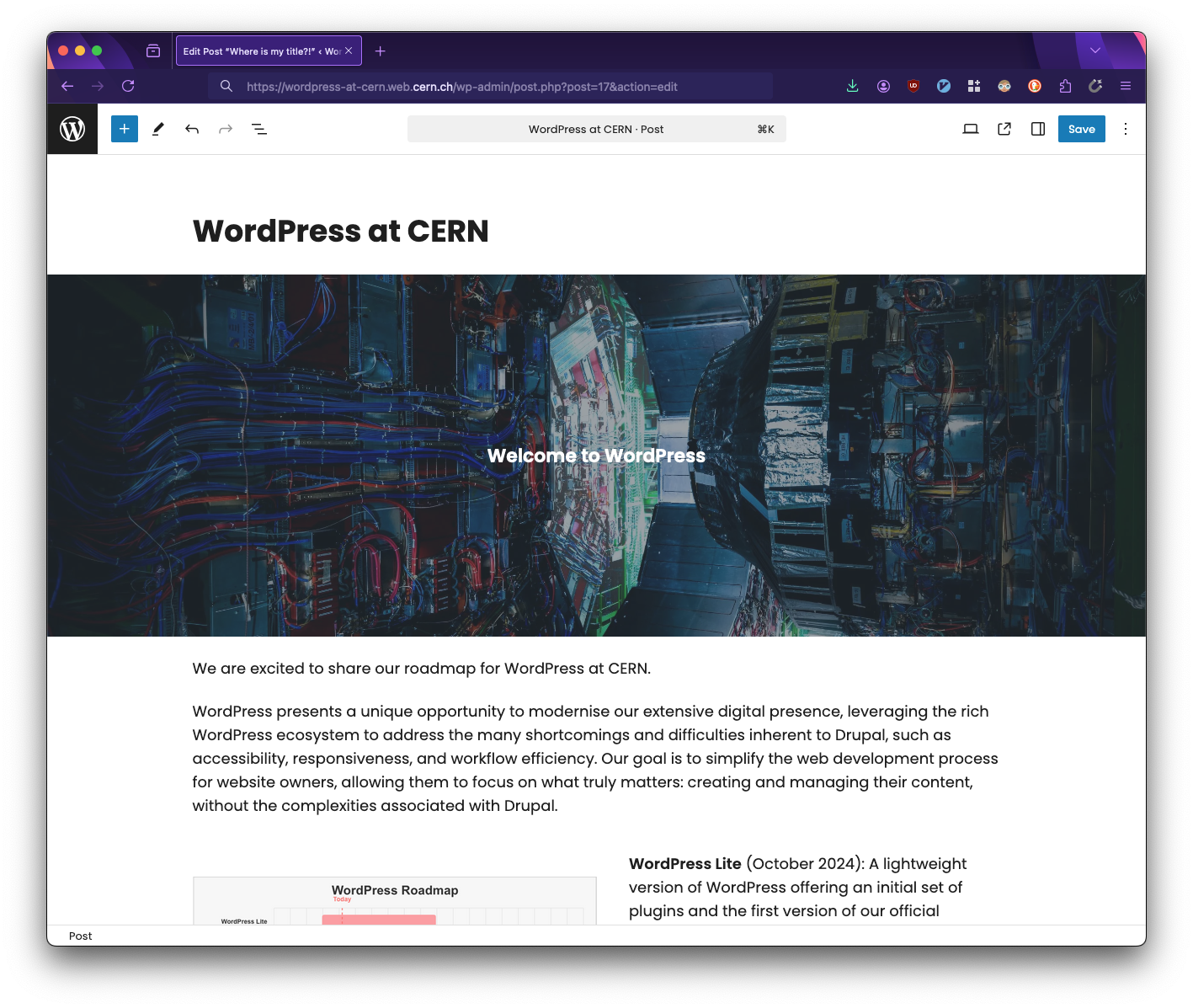Introduction

Welcome to WordPress at CERN!
The decision to adopt WordPress as CERN's new web content management system follows an extensive review of both Drupal and several other alternative systems: a process requested and overseen by the Web Governance Board initially motivated by the increasing complexity and maintenance demands of supporting the status quo.
WordPress presents a unique opportunity to modernise our extensive digital presence, leveraging the rich WordPress ecosystem to address the many shortcomings and difficulties inherent to Drupal. With the Web Governance Board's endorsement, WordPress will be the foundation for CERN's web presence in the years to come.
WordPress is officially released at CERN!